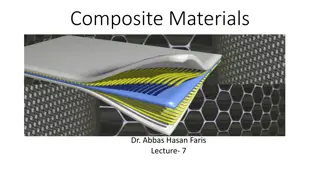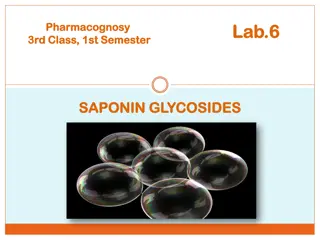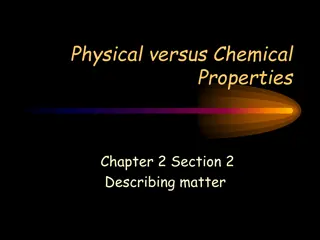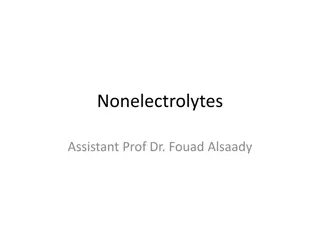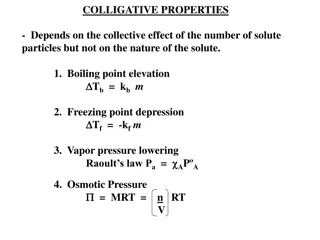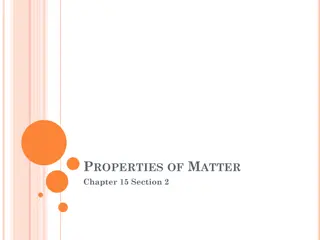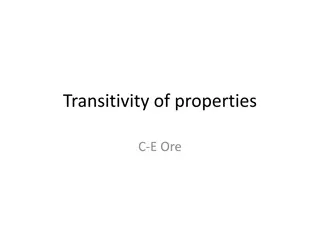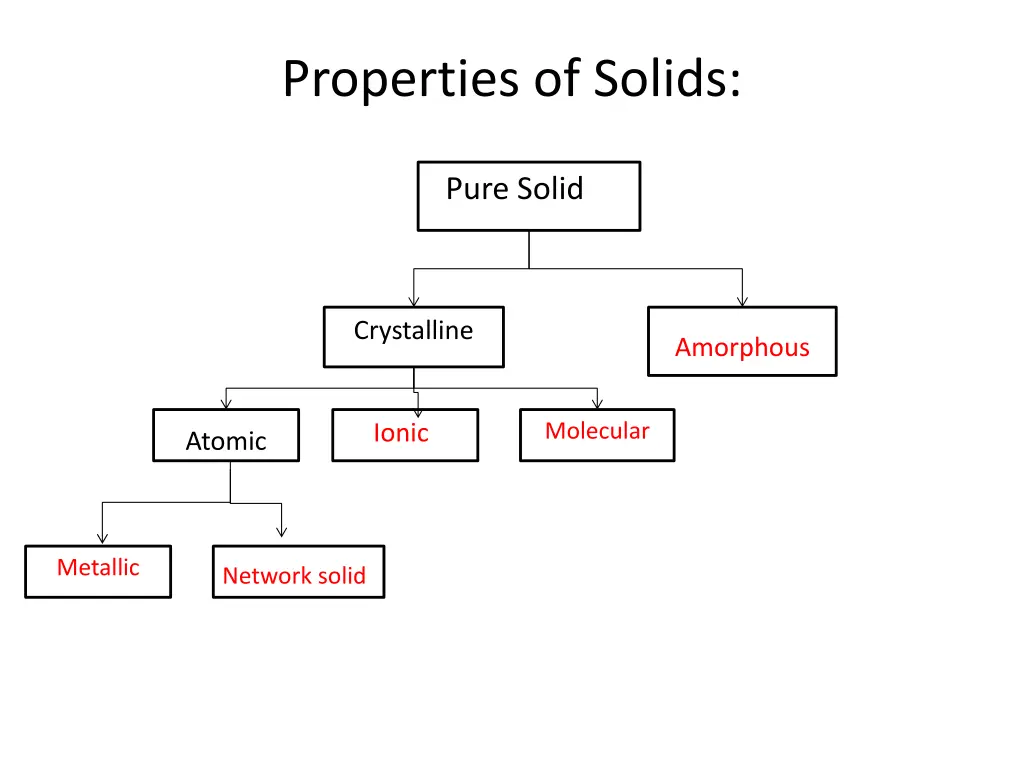
Understanding Properties of Solids and Crystal Lattices
Explore the types of solids - from crystalline to amorphous - and learn about their unique properties, structural units, and forces at play. Dive into the world of unit cells and crystal lattice arrangements to grasp the fundamentals of solid-state chemistry.
Download Presentation

Please find below an Image/Link to download the presentation.
The content on the website is provided AS IS for your information and personal use only. It may not be sold, licensed, or shared on other websites without obtaining consent from the author. If you encounter any issues during the download, it is possible that the publisher has removed the file from their server.
You are allowed to download the files provided on this website for personal or commercial use, subject to the condition that they are used lawfully. All files are the property of their respective owners.
The content on the website is provided AS IS for your information and personal use only. It may not be sold, licensed, or shared on other websites without obtaining consent from the author.
E N D
Presentation Transcript
Properties of Solids: Pure Solid Crystalline Amorphous Molecular Ionic Atomic Metallic Network solid
Properties of solids Type Example Structural unit Forces Properties Electrostatic attraction Hard, brittle, high melting pt. Ionic NaCl, K2SO4 (+)/(-) ions Metal atoms [(+) ions surrounded by delocalized electrons.] Electrostatic attraction Malleable, ductile, conductive, range of MP & BP Fe, Ag, Cu Metallic van der Waals forces (dispersion, dipoloe- dipole, H-bond) Low/mod. Melting points, poor conductors H2, O2, CH4 Molecules Molecular Wide range of hardness & MP. Poor conductors of electricity (with some exceptions) Graphite, diamond (C), Quartz, etc. (Si) Atoms with infinite 2 or 3-D network Covalent-directional electron pair bonds Network Glass, polyethlene (plastics) Covalently bonded network with no crystalline structure Covalent- directional electron pair bonds Noncrystalline wide range mp. Poor conductors. Amorphous
Identify the type of solid for each of the following substances: C CO2 P4 CH3OH Mo NH4Cl Li2O H2S
Answers: C atomic, covalent network CO2 molecular (London dispersion) P4 - molecular CH3OH molecular (H-Bonding) Mo atomic, metallic NH4Cl - ionic Li2O - ionic H2S molecular (dipole-dipole)
Unit Cell: the smallest repeating unit of a solid. Arrangement of crystal lattice: Simple cube Body centered cube Face centered cube Determining the number of atoms/unit cell= # atoms total within cell + # atoms in the face of cell + # atoms on the end of cell + 1/8 # of atoms at the corners of the unit cell.
Unit Cell: the smallest repeating unit of a solid. Arrangement (repeating pattern) of crystal lattice: Simple cube Body centered cube Face centered cube Determining the number of atoms/unit cell= # atoms total within cell + # atoms in the face of cell + # atoms on the end of cell + 1/8 # of atoms at the corners of the unit cell.
Cubic Unit Cells There are 7 basic crystal systems, but we will only be concerned with CUBIC form here. All sides equal length 1/8 of each atom on a corner is within the cube 1/2 of each atom on a face is within the cube 1/4 of each atom on a side is within the cube All angles are 90 degrees
Simple Cube: # atoms = 8 x 1/8 atom of corner = 1 atom
Body Center Cubic Cell # atoms = 1 center + 8 x 1/8 corner = 2 atoms
Face-centered Cubic Cell # atoms = 6 x face + 8 x 1/8 corner = 4 atoms
Ionic compounds and Lattice energy Ionic compounds are typically hard, crystalline solids with high melting points due to the organized arrangement of ions in a crystal lattice. Lattice energy describes the energy of formation of one mole of a solid crystalline ionic compounds when ions in the gas phase combine. ex. Na+(g) + Cl-(g) NaCl(s) Remember: Hf = Na(s) + Cl2(g) NaCl(s) Born-Haber cycle- applies Hess s law to the calculation of lattice energy.
Born-Haber cycle Enthalpy calculation for ionic compound
Born-Haber cycle for NaCl Enthalpy considerations for the formation of NaCl(s)

